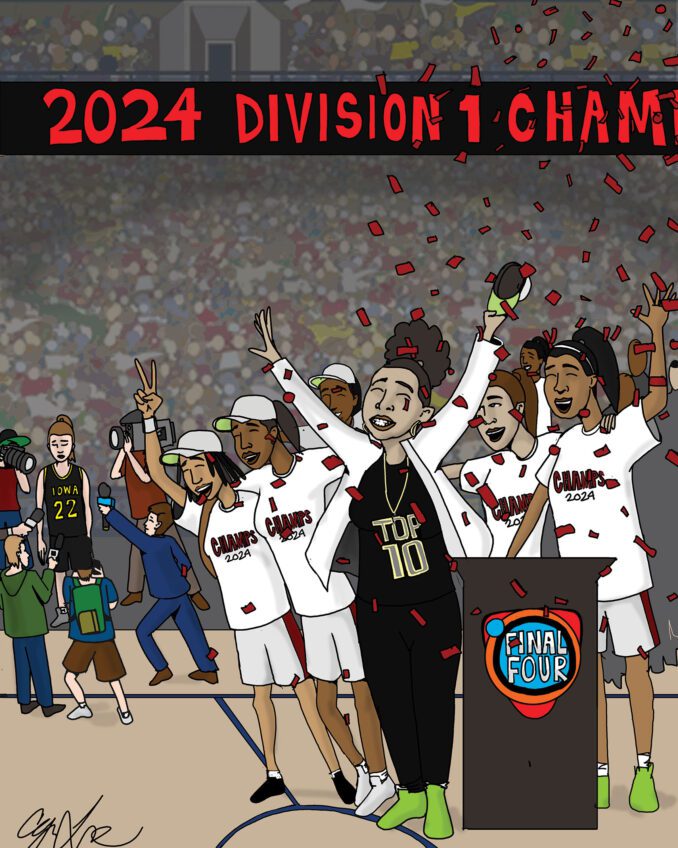The year 2020 was a stressful one. With George Floyd’s death at the hands of a Minneapolis police officer as an inflection point about race and racism in America, an unprecedented presidential election, and social unrest during an ongoing pandemic with a rising death toll, something is deeply broken in America’s body politic.
America has been divided and broken before — just look at the Civil War and the Civil Rights Movement of the 1960s. But is America so broken now that we can’t turn back? Do we want to turn back? To invoke the words of the Rev. Martin Luther King Jr., where do we go from here? That’s the daunting question for 2021. We have revisited it several times in American history, resisting the work and change needed to be done — individually, collectively and systematically.
King wrote “Where Do We Go From Here?” during the long, hot summer of 1967. It was his fourth and final tome before his assassination a year later. King wrote the book because there were 159 race riots across America that summer. The nation was a tinderbox. Many wondered whether, with the rage and frustration of young black America, the government could extinguish the conflagration. Sadly, what caught the nation’s attention was not the protesters’ plight but the violence.
“Everyone is worrying about the long, hot summer, with its threat of riots,” King said that summer at a luncheon in his honor. “We had a long, cold winter when little was done about the conditions that create riots.”
The riots were public cries for better jobs, higher wages, decent housing, quality education, health care, voting rights and an end to mass incarceration and police brutality. They were a clarion call to end systemic racism.
The summer of 2020 was long and hot, too. The United States saw 7,750 Black Lives Matter protests between May 26, the day after Floyd died, and Aug. 22. The protestors came from all walks of life, representing not just African Americans but the entire face of America. And the overwhelming majority of the protests were nonviolent. This year’s demonstrations were the same as the ones in 1967 — a public cry for better jobs, higher wages, decent housing, quality education, health care, voting rights and an end mass incarceration and police brutality.
This time, however, the clarion call is to end systemic racism now!
To know where we go from here, we must honestly look at where we are now. Doing so doesn’t excuse those who think they are on the right side of justice. While many white people would not think of themselves as racist, there is a difference between not being racist and being anti-racist.
White supremacy is an ideology and a belief system. It is not the province solely of white people; there are Black white supremacists, too. Supreme Court Justice Clarence Thomas and Dr. Ben Carson are examples. They uphold a white, heteronormative, nationalist government that has set policies that impact us all — LGBTQ people, women and people of color, especially.
White supremacy is in America’s DNA. Clinging to it for so long is how we got so broken as a nation. The fact that we still have to ask where we go from here means America’s race problem has not been addressed. While the COVID-19 vaccine will eventually stop the spread of the pandemic, sadly, the pandemic of racism will persist. Americans cannot be blamed for the misinformation we have been absorbed from our culture, but we are responsible when we repeat that misinformation and unexamined racism after we have learned otherwise.
The death of George Floyd — a cisgender man — is a symbol of the new face of anti-Black violence, just as the death of Matthew Shepard in 1998 was a symbol of homophobic violence. His death forces us to look at what’s broken in America as well as ourselves. But his death can also be an opportunity for reconciliation and healing, recognizing our shared humanity. It starts by calling out and addressing racists, whether they are well-intentioned white liberals or ill-intentioned white nationalists, because both erase our lived reality of a multiracial society.
In the end, we cannot think that white supremacy and white privilege exist outside ourselves. Rather, it must be assumed. With that assumption, democracy can fully begin for those on the margin to experience what others take for granted.
Otherwise, we won’t be united as a country. Divided, we will continue to be petty people.
Irene Monroe is a theologian and syndicated columnist.






